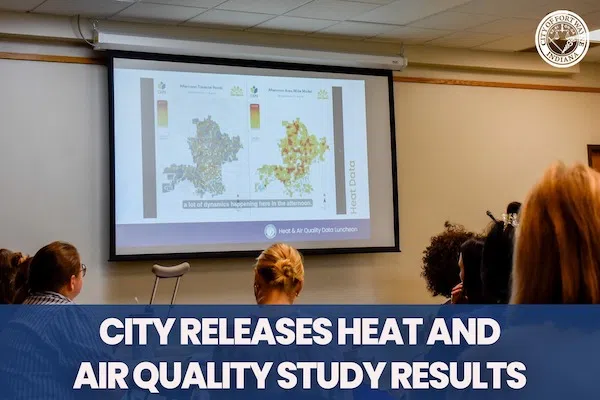
FORT WAYNE, Ind. (ADAMS) – There is a new resource to check out temperature changes in our areas.
On Wednesday, the City of Fort Wayne’s Community Development Division released heat and air quality data collected last summer as part of a federal Urban Heat Island mapping initiative. The results provide a snapshot in time of how urban heat and pollutant levels vary across neighborhoods and commercial districts throughout the city.
The information and searchable maps are available to the public on Engage Fort Wayne. Several resources to help address the health risks of extreme heat and poor air quality can also be found on the Engage page.
The City of Fort Wayne released the following:
In 2024, the City’s Community Development Division was awarded a grant from the National Oceanic and Atmospheric Association (NOAA) for the study. On August 26, 2024, approximately 40 volunteers drove throughout the city in the morning, afternoon and evening with heat and air quality (particulate matter) sensors mounted on their cars. Additionally, air quality data was collected over a period of 22 days from 10 air quality sensors mounted on City Utilities lift and pump stations and one Fort Wayne park pavilion.
According to the Centers for Disease Control (CDC) and the National Weather Service, extreme heat kills more people yearly in the United States than hurricanes, floods, and tornadoes combined. Additionally, urban heat islands, characterized by minimal tree cover and increased pavement, can be substantially hotter than surrounding areas. This is important to understand because it has a direct impact on the costs of building and improving infrastructure and parks.
“This is the first time Fort Wayne has access to city-wide ambient air temperature, so it’s a great way to start conversations about how to address the effects of extreme heat and higher air pollutant levels,” said Megan Grable, neighborhood planner with the Department of Neighborhoods. “Nonprofit agencies, utilities, neighborhood associations, government agencies and businesses can now access the data and use it to help make decisions to address extreme heat and poor air quality.”
In addition to the grant from NOAA, the study was also supported by local sponsors Foellinger Foundation and Fort Wayne Metals.
Click HERE for more information.








Comments